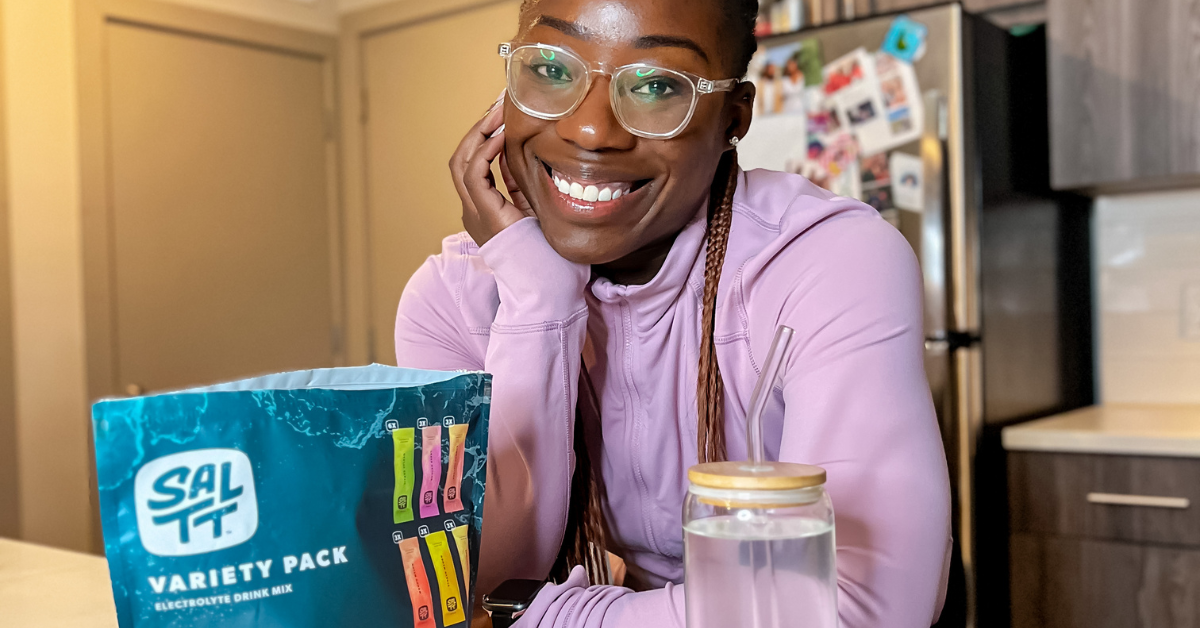We live in a world where health advice is abundant, and almost comically, it seems nearly every health "influencer" is far too eager to chase views by simply repeating whatever inflammatory thing they just heard, rather than checking their "facts" at the source.
It seems even those in government would rather parrot what they are told, rather then looking at facts. (I know...Gasp!) For years the FDA has recommended to reduce sodium intake to fewer than 2.3 grams per day. They say their argument rests on "strong scientific evidence" that reducing salt reduces blood pressure.
But when you read this "evidence" for yourself, you'll see it started with Lewis Dahl's finding in the 1960s that giving rats 150x the daily dose of sodium gave them high blood pressure. (Which makes sense. Having 150x your daily recommended intake of anything, even water, would have negative effects).
And then it continues with observational data like this based on anti-hypertensive drug trials. Meaning they said "blood pressure medicine reduces blood pressure, so we will assume that medication does the same thing as reducing salt" (a HUUUGE mental jump).
Then they took those hypertensive people, who we already know are more likely to be salt-sensitive, and drew conclusions based on observing groups of those who are already sick, clinging to conjecture and ignoring studies through the years that showed they were incorrect.
Lets ignore the billions of dollars behind that decades-old narrative and just look at the recent science ourselves. It paints a picture that sodium is much more friend than foe, especially for those leading an active lifestyle.
The Sodium Paradox

-
Does high salt intake mean high blood pressure?: The Intersalt study was conducted with over 10,000 people from 52 groups across the globe and found salt intake had NO correlation with blood pressure. The narrative of salt = high blood pressure simply didn't hold water when looking at a large section of the population. It was similar to if the FDA had noticed several people who got eaten by tigers happened to be wearing green socks, (ignored that they all were wearing a shirt made of steaks), and made the declaration that green socks mean you'll be eaten by a tiger. This study showed there were many, many people who wore green socks that did not get eaten by tigers.
-
Does LOW sodium intake mean low blood pressure?: The National Heart, Lung and Blood Institute's Framingham Heart Study actually found those with sodium intakes of less than 2.5 grams per day had higher blood pressure than those with intakes of more than 2.5 grams per day. So at least according to this study, low salt intake = high blood pressure.
Incorporating Sodium Wisely

And these findings are backed up by numerous other studies like this one in the Journal of the American Medical Association (JAMA), which declared there is little evidence that reducing salt intake reduces heart failure.
Maybe our ancestors were on to something with treating salt like gold.
It's All About Balance

However, we aren't saying that salt intake should be unlimited. Science is showing there is a "sweet spot" for salt intake. In this study from JAMA, scientists looked at salt intake and heart attack and stroke in 28,800 high-risk patients. They found that the sweet spot for risk reduction was not in high or low intake, but right in the middle at 4-6 grams per day.
This has been duplicated, like in this study in Science Daily, or this study of 100,000 people in 369 communities over 8 years, both showing a sweet spot of health between 4-6 grams per day.
For active individuals that number raises slightly, as sodium is even more critical. It helps maintain hydration and prevent hyponatremia (low blood sodium levels), a condition that can occur during prolonged exercise. Research in the Clinical Journal of Sport Medicine underscores the importance of sodium for athletes and those engaged in regular physical activity.
Incorporating the right amount of sodium into your diet is key, especially if you're physically active. Foods like olives, cottage cheese, and naturally salted nuts can be good sources. For those who sweat a lot during exercise, replenishing with electrolyte solutions that contain sodium can be crucial.
Potassium and Sodium: The Perfect Pair

And nearly all research (both for or against sodium) has shown that when consumed along with Potassium, there is a marked decrease in risk among participants of any sodium intake level. This is one reason we were desperate to create a balanced electrolyte formula like SALTT.
Embracing Sodium for a Healthy, Active Life

Understanding the role of sodium can empower you to make informed dietary choices. It's not about eliminating sodium; it's about finding the right balance that works for your body and lifestyle.
Let's embrace a more nuanced view of sodium as we strive for a healthy, vibrant life.
Stay informed, stay balanced, and let sodium be an integral part of your active lifestyle.

